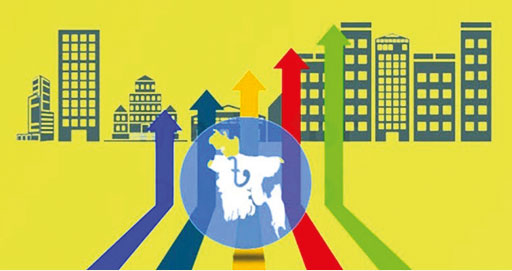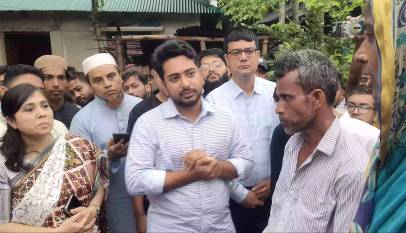New financial sector reform policy soon
Mahfuja Mukul: Ninth Five Year Plan will be the first pillar of building digital to smart Bangladesh. More than a dozen initiatives are being undertaken to address the challenges of transition from least developed countries. Among these are macroeconomic stabilization, human resource development, poverty reduction, higher investment targets, accelerating blue economy activities, cost reduction through use of technology, encouraging private sector, increasing domestic wealth, financial sector reforms, increasing employment opportunities. , ensuring food security, increasing multifaceted exports, institutional reforms in governance, continuing infrastructure development, improving quality of education, strengthening local government, empowering women and many more. The first meeting of the National Steering Committee will be held at the NEC conference room today, Thursday at 11 am.
Earlier, a high-level national steering committee was formed last Tuesday. Basically, this committee was formed to give necessary advice and suggestions to the General Economics Department of Bangladesh Planning Commission for the preparation of the Ninth Five Year Plan.
The first meeting was chaired by the Chairman of the Committee and Planning Minister Major General Abdus Salam (Retd.).
According to the sources concerned, an 18-page concept paper has already been prepared for preparing the 9th Five Year Plan. More than a dozen ministry secretaries have been invited to discuss the concept paper. The concept paper is titled, ‘Sustainable and Equity-Based Growth for Middle-Income Bangladesh’. The concept paper first outlines the context of the 9th Five Year Plan. Where the Prime Minister’s vision of 2021, future plans, transition from less developed countries, SDGs and other issues are included.
The concept paper describes the economic situation of Bangladesh including the global economy during the period of Covid-19. And from that situation, a picture of how Bangladesh has dealt with it and transitioned the economy has been presented. The GDP growth has increased from 3.45 percent in FY 2020 to 6.94 percent in FY 2021, it has been included in the concept paper. At the same time, the issue of 7.10 percent growth in the fiscal year 2022 was highlighted.
As mentioned in the concept paper, several projects in the field of communication have been completed in the Eighth Five Year Plan. Among these are many projects including Padma Multipurpose Bridge, Metrorail, Bangabandhu Tunnel under Karnaphuli, Hazrat Shahjalal International Airport, Matarbari Deep Sea Port in Cox’s Bazar.
It has been mentioned in the concept paper that several plans will be taken forward to the year 2041 in continuation of the eighth five-year plan. In particular, the Ninth Five Year Plan is being included as a pillar of building a Smart Bangladesh. Bangladesh Delta Plan 2100 will be added to this plan. Where the issue of water use and environment will be important. However, the Ninth Five Year Plan will try to stabilize the macro economy. As well as reducing poverty and inflation.
The vision for the upcoming 9th Five Year Plan includes – Human resource development, increasing employment opportunities for the active youth. However, the plan will be made keeping in mind the target of 2041. Where there will be an effort to increase the investment of the private sector as well as the public sector. However, for middle-income countries to progress, the poverty rate will be reduced to zero by 2041. The GDP growth rate will be raised to 8 percent. Growth will be everywhere. This includes achieving smart growth through the use of technology. By building a strong structure in the field of investment, there will be immense opportunities for domestic and foreign investment.
The issue of social security will be given great importance in the upcoming ninth five-year plan. Especially the disabled should not become a burden in the society. Areas of green production will be use of technology, pollution control, blue economy, pollution free air, green parks. Which will help accelerate development in middle income countries. An environment conducive to growth will be created in the field of business and commerce.
The Ninth Five Year Plan will be based on building Smart Bangladesh. From 2025 to 2030 and 2041, plans will be made with various goals. These include industrial revolution, knowledge-based education. Moving a country forward through smart economy. Where there will be no inequality. Everyone will participate. The industrial revolution will not only happen through factories. The medium of small and medium industries will also be encouraged. An environment will be created for a citizen to grow smart.
As mentioned in the concept paper, private sector investment will be encouraged. Through the investment Bangladesh can become a developed country. By 2041, investment levels could rise to 41 percent of GDP. Through which employment can be created. Various measures will be taken to increase the internal resources of the country. At the same time, the financial sector will be reformed. However, creating employment opportunities will be one of the challenges of the next plan.
Emphasis will be placed on diversified exports to meet the challenges ahead for transition from LDCs. Apart from this, the next plan will focus on infrastructure development. Electricity and gas are one of them. However, creating skilled workers will be the challenge of the day ahead. Several measures to improve the quality of health and education have been specifically mentioned in the concept paper.
Women’s empowerment will be included as one of the measures in the upcoming 9th Five Year Plan. Apart from this, Blue Economy will be taken seriously. This blue economy of the future will help bring great wealth to the country. Meanwhile, although the concept paper was presented today, it is said that it will be finalized in May next year through discussions and meetings in stages.
Rare Israeli airstrike in Beirut kills Hezbollah commander and more than a dozen others
International Desk: Israel launched a rare airstrike that killed a senior Hezbollah milita…








